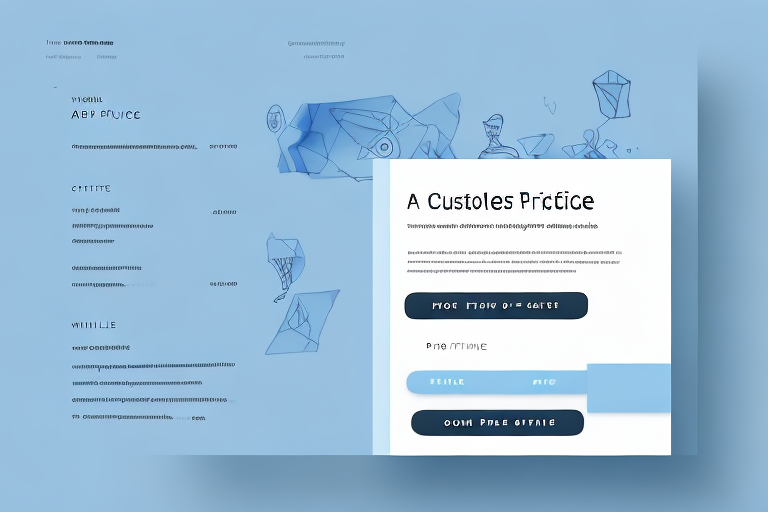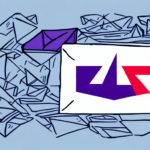Understanding the Benefits of a One-Rate System
Are you looking to simplify your pricing structure? A one-rate system might be the solution you need. In this comprehensive guide, we'll explore what a one-rate system is, its historical context, operational mechanisms, advantages and disadvantages, real-world examples, implementation strategies, future trends, and more. By the end of this article, you'll have a thorough understanding of the benefits of adopting a one-rate system for your business.
What is a One-Rate System?
A one-rate system is a pricing strategy where all customers are charged the same rate, irrespective of factors such as volume, location, or other variables. This straightforward approach simplifies the decision-making process for both the customer and the business.
Key Characteristics
- Uniform Pricing: A single rate applies to all customers.
- Simplicity: Easy to understand for both parties.
- Transparency: Clear and consistent pricing fosters trust.
Benefits of a One-Rate System
- Customer Loyalty: Transparency and consistency can enhance trust and repeat business.
- Reduced Administrative Costs: Eliminates the need to manage multiple pricing tiers.
- Streamlined Operations: Simplifies billing and invoicing processes.
The History of One-Rate Systems
One-rate systems have been utilized across various industries for decades. For instance, in the early United States railroad industry, a flat rate was charged for all passengers, regardless of the distance traveled. This approach simplified fare structures and made railway travel more accessible.
Historical Examples
- Railroads: Flat fares irrespective of travel distance.
- Taxi Services: Some cities maintain flat-rate fares regardless of destination.
- Shipping: Flat-rate shipping fees in e-commerce platforms.
Evolution Over Time
With the rise of e-commerce, one-rate systems have adapted to modern needs. For example, flat-rate shipping allows customers to know shipping costs upfront, enhancing the purchasing experience. In healthcare, some institutions use flat-rate pricing for procedures, aiming to reduce billing complexity.
How One-Rate Systems Work
Implementing a one-rate system involves setting a single price point for a product or service, irrespective of varying customer needs or usage levels. This uniform approach can significantly simplify both pricing calculations and customer interactions.
Operational Mechanism
- Determine a competitive and sustainable rate.
- Apply this rate uniformly across all customer transactions.
- Maintain consistent billing and invoicing practices.
Considerations for Businesses
While one-rate systems offer simplicity, businesses must ensure that the chosen rate covers costs and remains competitive. Factors such as regional cost variations and customer purchasing behavior must be analyzed to set an effective rate.
Advantages of One-Rate Systems
Adopting a one-rate system can provide several benefits that enhance both customer satisfaction and business efficiency.
Simplified Pricing Structure
A single, transparent price makes it easier for customers to understand what they're paying for, reducing confusion and enhancing trust.
Increased Customer Loyalty
Customers are more likely to return to businesses that offer straightforward and predictable pricing models.
Operational Efficiency
Eliminates the complexity of managing multiple pricing tiers, reducing administrative overhead and potential errors.
Enhanced Marketing Appeal
Simple pricing can be a strong selling point, especially in competitive markets where consumers seek clarity and honesty.
Disadvantages of One-Rate Systems
Despite its benefits, a one-rate system may present certain challenges for businesses.
Lack of Flexibility
Uniform pricing does not account for varying customer needs or usage levels, potentially alienating heavy or light users.
Profit Margin Risks
If the set rate is too low, businesses may struggle to cover costs; setting it too high could drive customers away.
Limited Incentives
Without variable pricing, there are fewer incentives for customers to increase their purchase volume.
Examples of One-Rate Systems in Practice
Many industries employ one-rate systems to various extents, demonstrating the model's versatility and effectiveness.
Flat-Rate Shipping
Online retailers like ShipScience offer flat-rate shipping fees regardless of package size or weight, simplifying the checkout process.
Unlimited Data Plans
Mobile carriers such as Verizon and AT&T provide unlimited data plans at a fixed monthly rate, catering to heavy data users who prefer predictable billing.
Subscription Services
Platforms like Netflix charge a single monthly fee for unlimited access to content, enhancing user experience through simplicity.
How a One-Rate System Can Benefit Your Business
Implementing a one-rate system can lead to numerous advantages that drive business growth and operational efficiency.
Enhanced Customer Experience
Customers appreciate the transparency and ease of understanding a single pricing model, which can lead to higher satisfaction and retention rates.
Competitive Advantage
A straightforward pricing strategy can differentiate your business in a crowded market, attracting customers who value simplicity.
Improved Cash Flow
Consistent and predictable pricing can stabilize revenue streams, aiding in better financial planning and management.
How to Implement a One-Rate System in Your Business
Transitioning to a one-rate system requires careful planning and strategic execution to ensure success.
Step-by-Step Implementation
- Analyze Costs: Determine all costs associated with your product or service to set a sustainable rate.
- Market Research: Study competitor pricing and customer willingness to pay.
- Set the Rate: Establish a price that balances profitability with market competitiveness.
- Communicate Clearly: Update your website, marketing materials, and customer communications to reflect the new pricing structure.
- Monitor and Adjust: Collect customer feedback and analyze sales data to make necessary adjustments.
Best Practices
- Transparency: Clearly explain the benefits and reasons for the pricing change to your customers.
- Value Addition: Consider bundling additional features or services to enhance the perceived value.
- Competitive Benchmarking: Regularly compare your pricing with industry standards to remain competitive.
The Future of One-Rate Systems: Trends and Predictions
The adoption of one-rate systems is expected to grow, driven by several emerging trends and technological advancements.
Globalization
As businesses expand globally, a one-rate system can simplify cross-border transactions and enhance international customer experiences.
Technological Advancements
Innovations in billing and payment systems make it easier to implement and manage one-rate models efficiently.
Consumer Demand for Transparency
Modern consumers increasingly value clear and straightforward pricing, pushing more businesses to adopt one-rate systems.
Comparison of One-Rate System vs. Multi-Tiered Pricing
Choosing between a one-rate system and a multi-tiered pricing structure depends on your business model and customer base.
One-Rate System
- Simple and transparent.
- Easy to manage and communicate.
- May lack flexibility for diverse customer needs.
Multi-Tiered Pricing
- Allows for differentiation based on usage or customer segments.
- Can maximize revenue by catering to different willingness to pay.
- More complex to manage and explain to customers.
Which to Choose?
Evaluate your business goals, customer preferences, and operational capabilities to determine the most suitable pricing strategy.
Common Misconceptions About One-Rate Systems
Several misconceptions can deter businesses from considering a one-rate system. It's important to address these to make an informed decision.
Misconception 1: Lack of Flexibility
Contrary to popular belief, one-rate systems can offer flexibility through optional add-ons or premium services, maintaining simplicity for the core offering.
Misconception 2: Reduced Profitability
When properly calculated, a one-rate system can ensure profitability by covering all costs and incorporating desired profit margins.
Misconception 3: Customer Alienation
Transparent and fair pricing can actually enhance customer relationships, provided the rate is competitive and perceived as fair.
Case Studies: Successful Companies Using One-Rate Systems
Examining successful implementations of one-rate systems can provide valuable insights for your own strategy.
Amazon
Amazon offers flat-rate shipping options like Amazon Prime, providing unlimited free shipping for a fixed annual fee. This model has significantly boosted customer loyalty and sales.
Lyft
Lyft utilizes a flat-rate pricing model for certain ride options, ensuring predictable costs for customers and simplifying the booking process.
Netflix
Netflix's subscription-based model charges a single monthly fee for unlimited access to its streaming library, enhancing user experience through simplicity.
Potential Risks and Limitations of Implementing a One-Rate System
While beneficial, one-rate systems come with inherent risks that must be carefully managed.
Customer Perception
Some customers may feel they are not receiving personalized pricing, potentially leading to dissatisfaction among those who use the service less or more than average.
Profit Margin Constraints
Businesses with high fixed or variable costs may struggle to maintain profitability if the set rate does not adequately cover expenses across all customer segments.
Market Competitiveness
If competitors offer more flexible pricing, a one-rate system might put a business at a disadvantage in attracting certain customer groups.
Conclusion
A one-rate system can be a powerful pricing strategy that simplifies decision-making for customers and reduces operational complexities for businesses. Its emphasis on transparency and consistency fosters customer loyalty and can differentiate a business in a competitive market. While there are challenges to consider, the benefits of a one-rate system often outweigh its limitations, making it a valuable tool for long-term business success and growth.




















